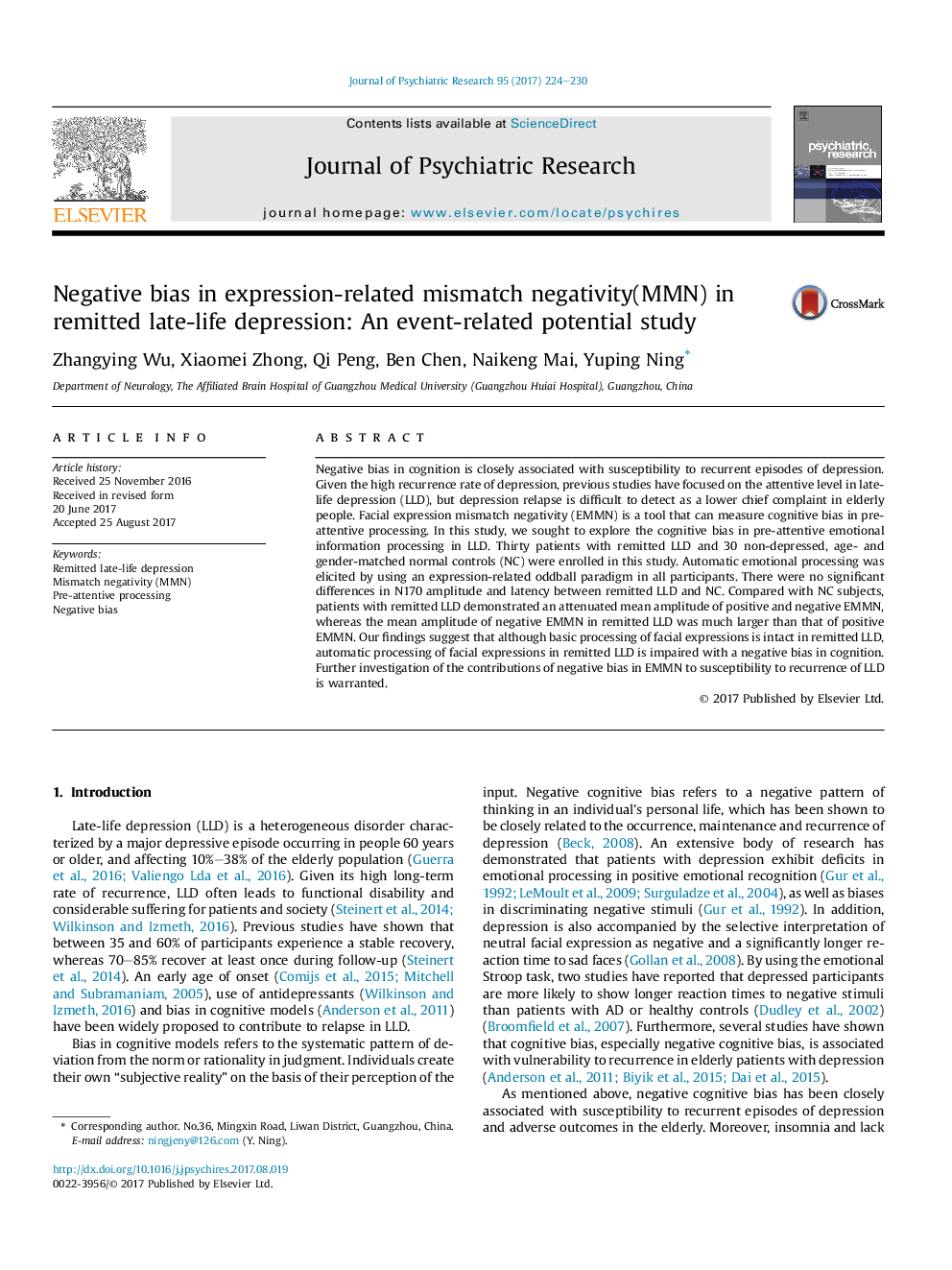| Article ID | Journal | Published Year | Pages | File Type |
|---|---|---|---|---|
| 4931985 | Journal of Psychiatric Research | 2017 | 7 Pages |
â¢We investigated automatic processing of facial expression in remitted LLD patients.â¢Although basic processing of facial expression is intact in remitted LLD, function of automatic processing is impaired.â¢Remitted LLD patients indicated an inherent bias to negative materials or a diminished positive effect.
Negative bias in cognition is closely associated with susceptibility to recurrent episodes of depression. Given the high recurrence rate of depression, previous studies have focused on the attentive level in late-life depression (LLD), but depression relapse is difficult to detect as a lower chief complaint in elderly people. Facial expression mismatch negativity (EMMN) is a tool that can measure cognitive bias in pre-attentive processing. In this study, we sought to explore the cognitive bias in pre-attentive emotional information processing in LLD. Thirty patients with remitted LLD and 30 non-depressed, age- and gender-matched normal controls (NC) were enrolled in this study. Automatic emotional processing was elicited by using an expression-related oddball paradigm in all participants. There were no significant differences in N170 amplitude and latency between remitted LLD and NC. Compared with NC subjects, patients with remitted LLD demonstrated an attenuated mean amplitude of positive and negative EMMN, whereas the mean amplitude of negative EMMN in remitted LLD was much larger than that of positive EMMN. Our findings suggest that although basic processing of facial expressions is intact in remitted LLD, automatic processing of facial expressions in remitted LLD is impaired with a negative bias in cognition. Further investigation of the contributions of negative bias in EMMN to susceptibility to recurrence of LLD is warranted.
Graphical abstractDownload high-res image (157KB)Download full-size image
